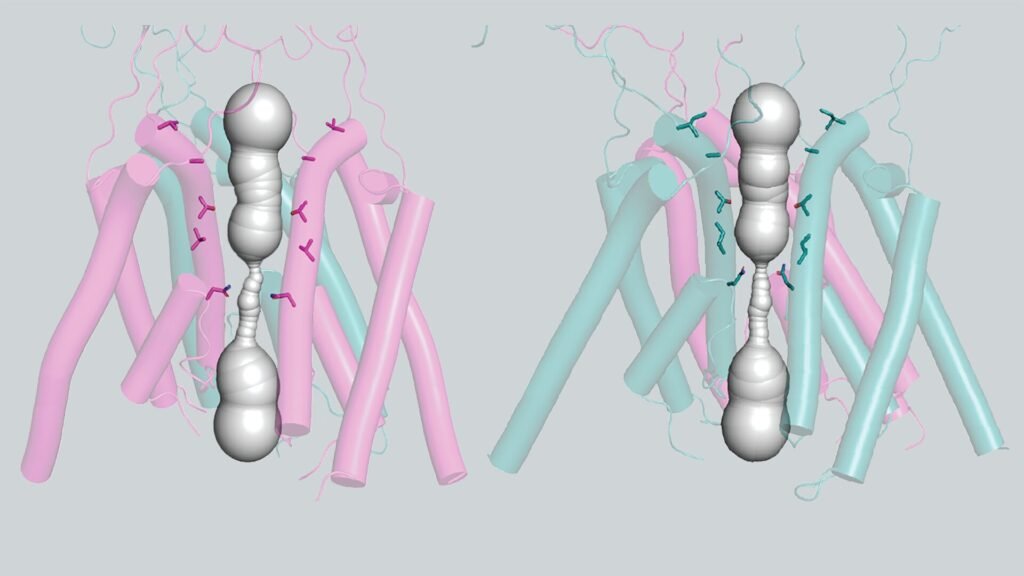The latest research from Cold Spring Harbor Laboratory (CSHL) has shed light on the molecular mechanisms that regulate the brain’s NMDA receptors, which play a crucial role in neuronal communication. Led by structural biologist Hiro Furukawa, the study delves into how these ion channels are controlled by natural and synthetic regulators to maintain proper function.
NMDA receptors are essential for learning and memory, but dysregulation can lead to neurodegenerative disorders like Alzheimer’s disease. Furukawa and postdoc Hyunook Kang used cryo-electron microscopy to visualize how a natural neurosteroid called 24S-HC can keep the NMDAR open, while a synthetic regulator can prevent full activation.
Their findings, published in Nature, show that the NMDAR has four rod-like parts that bend to fully open the channel. The synthetic regulator locks two rods in place, restricting the channel’s opening. Understanding these mechanisms can pave the way for new therapies that target NMDARs to treat neurological conditions.
Collaborating with Emory University, Furukawa’s team also measured the flow of ions through NMDARs in different states. They found that a fully open channel allows more ions to pass through, enhancing neural signaling. Importantly, a partially open channel is more selective, making it easier for sodium to enter than calcium. This selectivity has implications for therapeutic interventions in conditions like neurodegeneration and stroke.
By deciphering how natural and synthetic regulators interact with NMDARs, researchers aim to develop targeted therapies that modulate ion flow in the brain. This precise control could help maintain normal electrical activity while preventing neuronal degeneration. The diverse array of NMDARs and neurosteroids present in the brain offers a rich landscape for further exploration, with the potential to unlock new treatment strategies and improve mental health outcomes.
For more information on this groundbreaking research, you can refer to the published study in Nature by Hiro Furukawa titled “Mechanism of conductance control and neurosteroid binding in NMDA receptors” (DOI: 10.1038/s41586-025-09695-4). Visit the CSHL website for updates and additional insights on their research endeavors.
As we delve deeper into the intricate workings of the brain’s electrical gates, the discovery of novel regulatory mechanisms opens up promising avenues for therapeutic advancements in neurodegenerative conditions. Stay tuned for further developments in this fascinating field of neuroscience.


